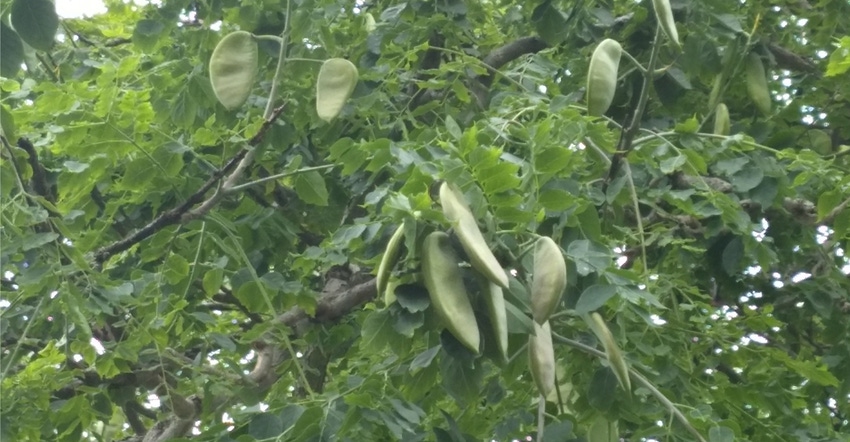
You don’t have to be from Kentucky to enjoy the beautiful aspects of the Kentucky coffeetree (Gymnocladus dioicus). The native range of this interesting tree is scattered from the upper South into the eastern and Northern Plains states and the Midwest. That said, it grows well beyond its native range.
In our hometown arboretum in northeast Nebraska, we have a great specimen tree that was planted about 27 years ago. This tree is now 35 feet tall. Despite its obvious attributes, the Kentucky coffeetree has been one of those native trees that arborists and forestry professionals alike say is underutilized.
It handles all kinds of conditions and has even been planted on closed mine land to reclaim the soil. It is relatively pest free, and its strong wood can tolerate moderate amounts of ice and snow without dropping limbs.
A true North America native and the only member of the Gymnocladus genus that is native, the tree had several medicinal uses by Native Americans. According to the Plant Guide from USDA's Natural Resources Conservation Service, the pulp from the wood was used to treat insanity, and for home remedies for fever and headaches.
Some native tribes mixed the bark of the coffeetree with gayfeather and buffalo gourd to make an appetizer. Other tribes made tea from the leaves and pulp and used it as a laxative.
The long pods and seeds inside the pods on the tree are poisonous, containing a quinolizidine alkaloid and nicotinic receptor agonist called cytisine. Hydrocyanic acid is another toxin in the tree.
However, early settlers ground the seeds and used them as a substitute for coffee, giving the tree its name. It is thought that thoroughly roasting the seeds neutralized the alkaloid. The wood was coveted by pioneer settlers for use in cabinetry, interior finish and furniture, and the beans were used by children in games.
Fence posts made of coffeetree can last up to 50 years. From an ornamental standpoint, the ripening pods of the tree darken and contrast to the bright yellow fall foliage.
Healthy, mature trees can grow to a height of 40 to 60 feet and live from 100 to 150 years. It contains the largest compound leaf of any tree grown in much of the Plains. The coffeetree is not invasive, and the seeds do not easily germinate because of their hard shell.
However, the leaves, seeds and pulp are poisonous to livestock, humans and pets, and cattle have reportedly died after drinking water that was contaminated by fallen leaves and seeds.
Because of this, the coffeetree should not be planted in areas where livestock graze, and animals shouldn’t be allowed to graze areas where coffeetrees exist until grasses and vegetation provide abundant alternative grazing in the spring.
With that said, the Kentucky coffeetree is one of those native species that can help us replace disease- and insect-ridden ash and elm in the right location on the farm and ranch. With their unique heritage, they can provide interest and diversity to the farmstead forest.
About the Author(s)
You May Also Like






